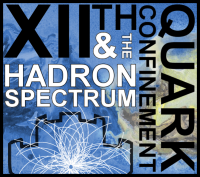Speaker
Description
The study of lattice gauge theories with Monte Carlo simulations is hindered by the infamous sign problem that appears under certain circumstances, in particular at non-zero chemical potential. So far, there is no universal method to overcome this problem. However, recent years brought a new class of non-perturbative Hamiltonian techniques named tensor networks, where the sign problem is absent. In previous work, we have demonstrated that this approach, in particular matrix product states in 1+1 dimensions, can be used to perform precise calculations in a lattice gauge theory, the massless and massive Schwinger model. We have computed the mass spectrum of this theory, its thermal properties and real-time dynamics. In this work, we extend our calculations to the case of two flavours and non-zero chemical potential. We are able to reliably reproduce known analytical results for this model, thus demonstrating for the first time that tensor networks can tackle the sign problem of a lattice gauge theory at finite density.
